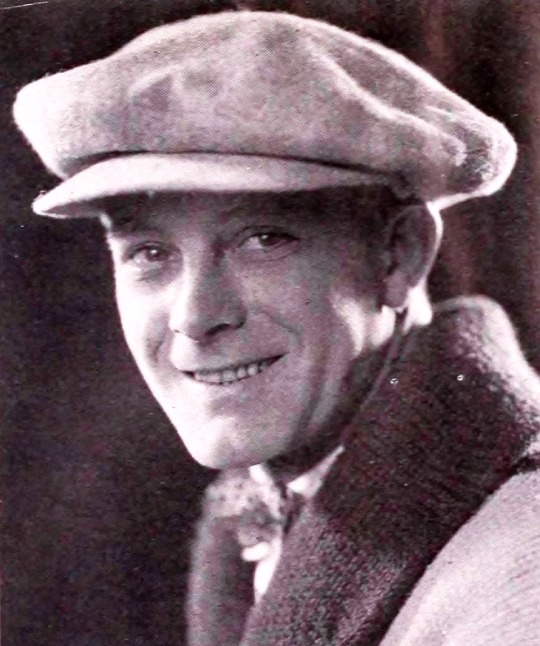#W.A. Sullivan
Explore tagged Tumblr posts
Text
A Brace of Boxing Billy Sullivan
I first became aware of Billy Sullivan (William Arthur Sullivan, 1891-1946) through my investigation of boxing movies in this post. His association with the genre, and the fact that he was from Worcester may be why some have said that was the nephew of John J. Sullivan, the Boston Strong Boy, but it wants corroboration. In films he was billed in every possible permutation of his name: Billy…

View On WordPress
#actor#Arthur Sullivan#Billy Sullivan#boxer#boxing#film#films#Movies#Rayart#serials#silent#star#Thanhouser#W.A. Sullivan#William A. Sullivan#William Arthur Sullivan#William Sullivan
0 notes
Text


1959 Lipton tea bags arrive in Australia.
Although tea bags were invented in the 1920s, they made few inroads into tea drinking in Australia for the next 50 years. There is one mention in 1926 when the Geelong Advertiser reported that, instead of the old type of strainers, an ever-increasing number of women were using a muslin tea bag inside the teapot. However, unlike the tea bag we know today, this was likely unbranded and possibly even a homemade affair.
The tea bag is said to have been invented by an American tea merchant Thomas Sullivan who, in 1908, sent out samples of his product in small silk bags. Several of the recipients simply dunked the bags in hot water rather than emptying out the samples and hence the tea bag was born. However, a Time article points to an earlier patent by Roberta C. Lawson and Mary Molaren of Milwaukee, although whether they ever produced the bags commercially is not stated.
By the late 1920s, Lipton was marketing tea bags in the United States. To people in other tea-drinking nations, including the United Kingdom and Australia, this remained for decades a subject of scorn. In 1949, the Kalgoorlie Miner called the tea bag “an oddment peculiar to America”. In The Age in 1950, the columnist Davina wrote:
I wonder how many Australians know what a “tea-bag” is. It is a device used by Americans (who are coffee-lovers) for making tea. They drop a little muslin bag of tea leaves in a pot of hot (not necessarily boiling) water or perhaps into the teacup itself. They later remove the bag – whether to keep it for another day I’m not sure.
In 1954, “Rosemary” wrote in the Narrogin W.A. Reliance Weekly:
I have heard it said that in America they “dunk” a tea-bag in a cup of hot water, call the resulting watery brew “tea” then decide that they prefer coffee after all.
Then, in 1958, we hear that the tea-bag is coming to Australia, as Dorothy Drain mentions in The Australian Women’s Weekly:
Tea-bags, long used on the other side of the Pacific, are being launched on the Australian market. I am not proposing to enter the lists for or against tea-bag tea, but I notice that the sellers make the point that they’re tidy and convenient.
The following year, Lipton was advertising its tea bags in Australia as the foolproof way for a husband to make an early morning cup of tea for his wife. According to the advertisement, this angelic husband (Mr B McLeod of Boronia) wrote a glowing testimonial saying “My wife thinks I’m Christmas since your handy little tea bags came along. She really appreciates a cup of tea in bed and it’s easy to be an “angel” when you can make tea this quick, clean way.” The advertisement implied that fussing with teapots needed housewifely skills, while even an unskilled male could manage a tea bag.
Despite this, it took some time before Aussies were prepared to abandon the teapot in favour of tea bags. Then, in 1968, Lipton introduced its first “jigglers” television commercial. According to Peter D. Griggs, in his book Tea in Australia: A History 1788-2000, the first 60-second commercial in the series showed people in many situations jiggling their tea bag in a cup, to the tune of “Jiggle in the morning, Jiggle in the evening, “Jiggle at suppertime”. In 1971, a follow-up commercial with a new jingle, “Everybody’s jiggling”, was produced by the noted Australian film director, Fred Schepisi. It won a silver at the Australian Film Institute and Australian Academy of Cinema and Television Arts awards.
Soon other tea brands. including Australia’s own Robur, were introducing their own products. Others decided that the way to go was instant tea, tackling the growing popularity of instant coffee head-on. Bushell’s was among the major brands to launch an instant variety, spruiking it as “The dawn of a new era in tea-making”. Other instant brands on the market included Nestle’s Nestea, Cuppa and Ceytea. None succeeded, and Bushells, formerly the market leader, saw its share of the market shrink as Australia embraced the tea bag.
Liptons was acquired by Unilever in 1971 and, as a result, by 1990 Unilever had become the world’s largest tea company. In Australia, Lipton has dominated the tea market in recent times. However, in November 2021 Unilever agreed to sell its global tea business to an investment group known as CVC Capital Partners.
Tony Beyer
1 note
·
View note